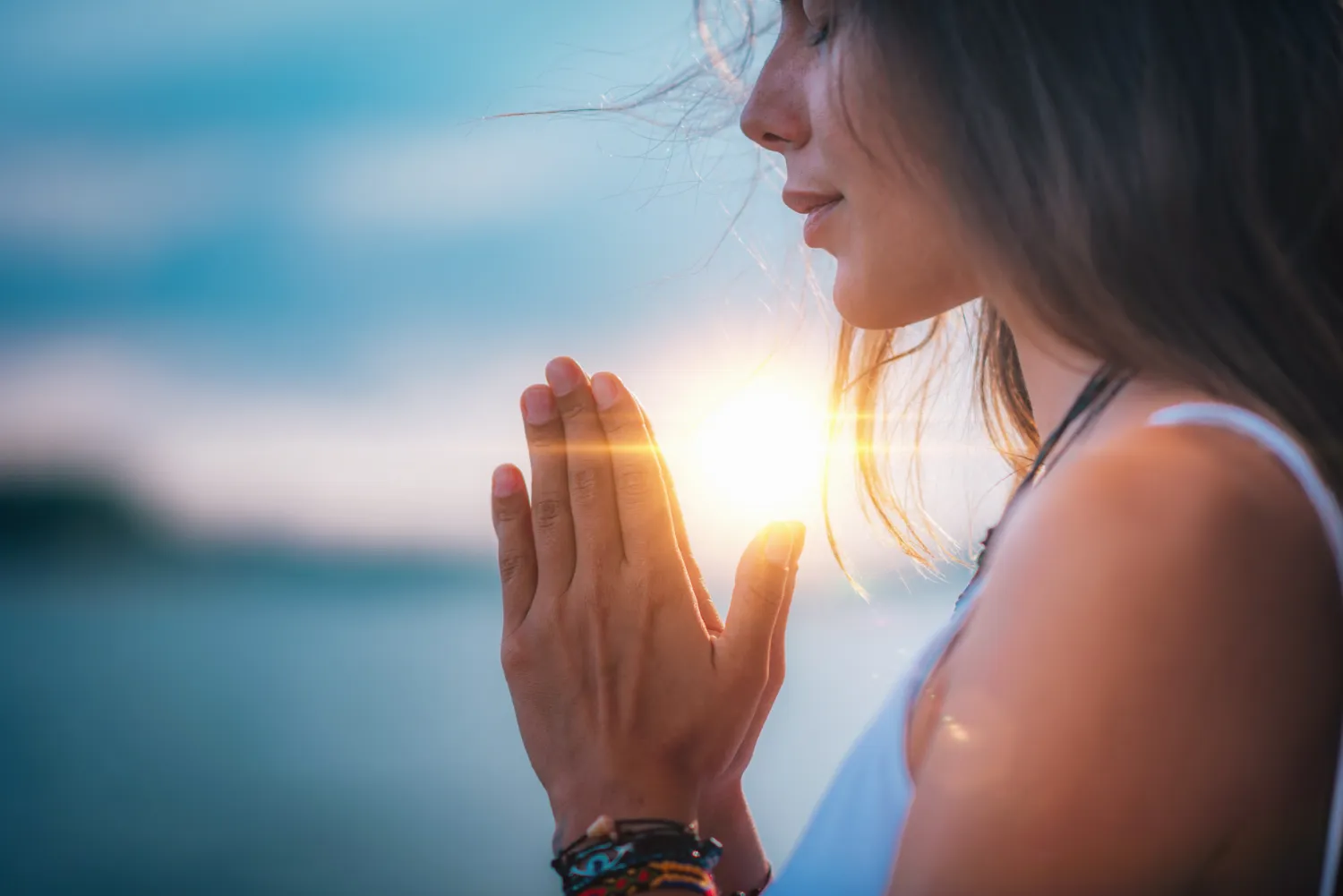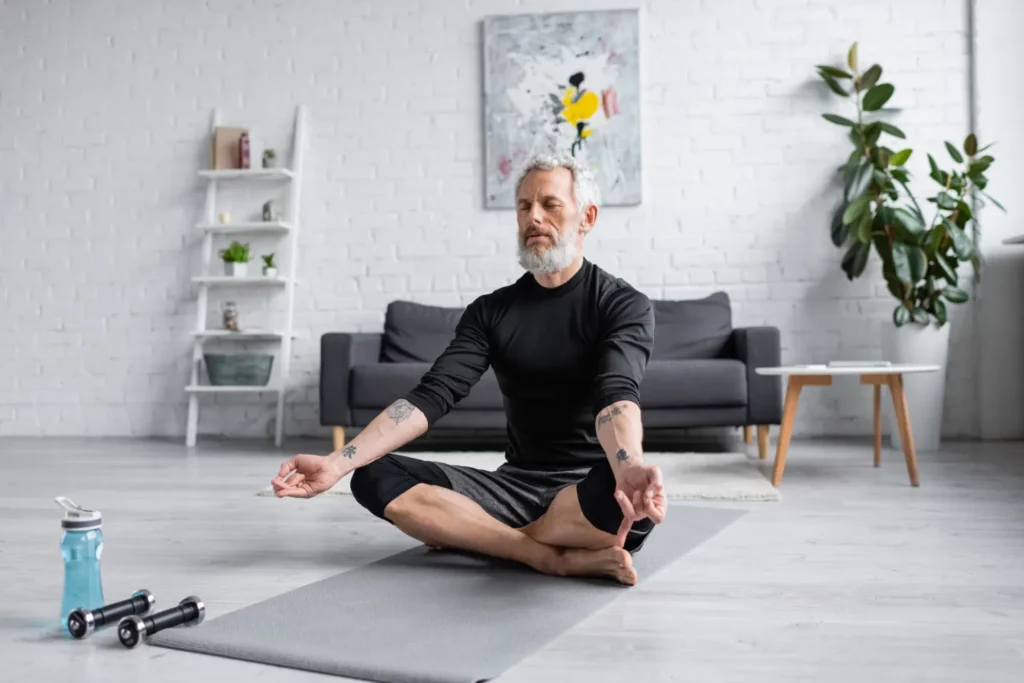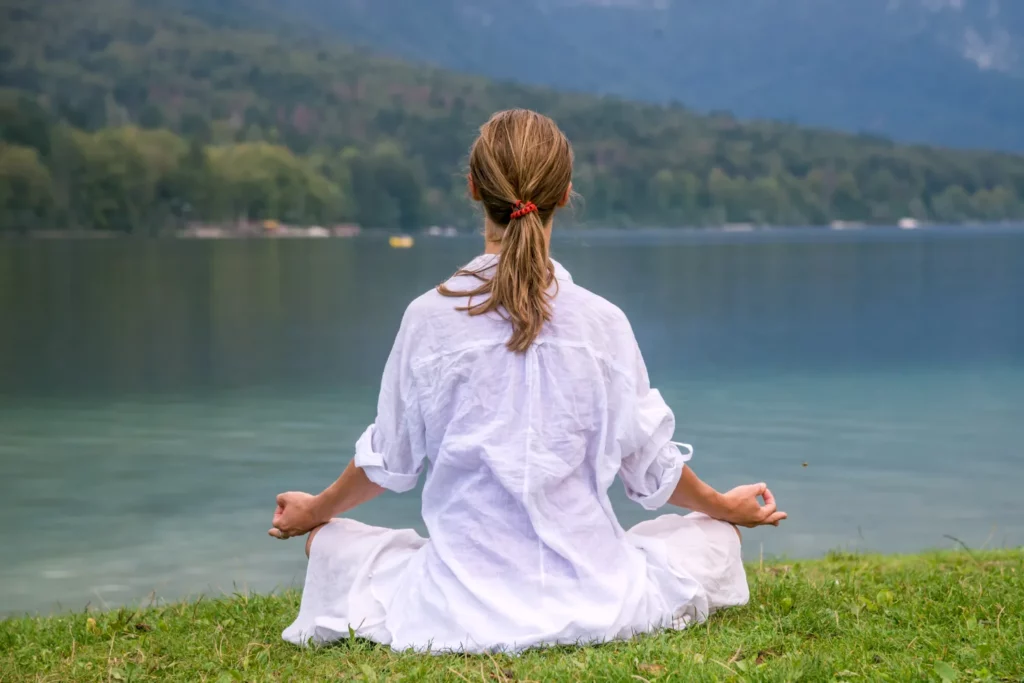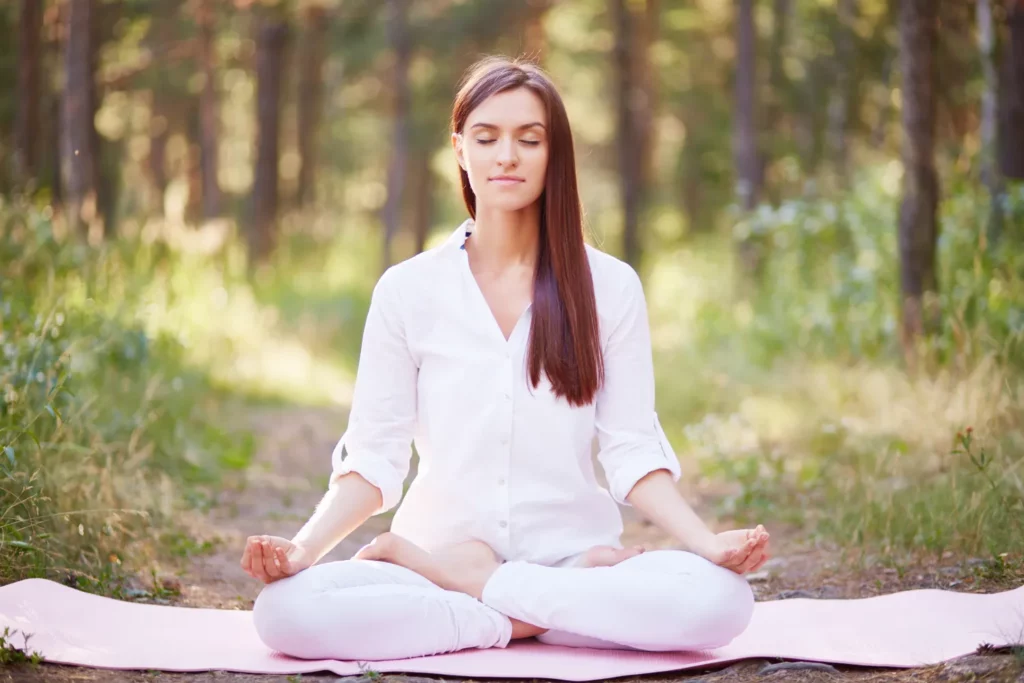Meditation: The Indian Practice That Can Forever Transform Your Life

Updated On: November 09, 2023 by Noha Basiouny
“If you are depressed, you are living in the past. If you are anxious, you are living in the future. If you are at peace, you are living in the present.”
— Lao Tzu
Although neither Google India nor any country in the world doodled about it, Sunday, 21 May 2023, was World Meditation Day. This day celebrates and promotes meditation as a mindful practice to help us, in a world like today’s where our attention is just as scattered as a dune hit by a savage storm, reclaim our focus, be present and feel peaceful.
Over the past few decades, meditation has been given greater recognition. YouTube is full to the brim with millions of videos made by people who have tried meditation and added it to their day-to-day routine. In line with what those people said, meditation transformed their lives by making them more aware of themselves in terms of their thoughts and emotions, whether these happen to be positive or negative. They can also better focus on what they are doing, manage stress and anxiety, and generally feel calm.
Distraction, poor self-awareness, anxiety, and stress are things almost every person on the planet is currently suffering from. A few years ago, I reached a point in my life where my brain was always so distracted that no matter what I did never really helped me focus or be present.
I had already abandoned reading because it suddenly became boring! Three-paragraph emails were draining, and long social media posts were insane. Even when it was necessary to read something, I could not get myself to focus for a few seconds before I found my eyes jumping over the lines, so impatient to reach the end of the text and get this irritating task over with.
A minute or so in, I would feel my hand reaching for my phone, which I had already disconnected from the Internet and put on the do-not-disturb mode to help myself concentrate. But apparently, my poor focus problem was so deeply rooted that no matter what I did to eliminate distractions did not and was not going to help.
But it was not so long until a friend of mine invited me to a free meditation session. At the time, when social media was not still a thing in our lives, I had as little information about meditation as most of us have about rocket science: almost nothing. What I did know, however, was more of a list of keywords I could use to research the topic further, such as India, peace, staying still, breath, soothing music, backache, conquering the world, etc.
Back then, meditation had already been trending just as it is now, branded as a major practice to reach mental clarity and well-being, just like how avocados, green smoothies, and protein shakes are now symbols of a healthy lifestyle.
“Through mediation,” my friend said, “you can improve your focus, manage stress, learn to live in the present, and generally become happier.”
Apart from the “happier” part, the rest was precisely what I needed back then.
“So, how is this meditation done?” I asked.

“It is simple.” my friend replied. “What you need to do is just sit in a comfortable position; it would be better if you close your eyes and focus on your breaths, in and out, while trying to push away any thoughts that might pop up.”
“That is simple,” I replied and excitedly signed up for the workshop.
Little did I know that “nearly impossible” was the other side of this coin called meditation
My first meditation experience was quite similar to what I thought. Those who organised the workshop were Indians living in my city. They told us how peaceful we, hopefully, would feel by the end of the session and advised us each to choose a comfortable position, close our eyes and deeply breathe in and out. So we did.
In the background, some soothing music was playing. Soon our host started, in an even more soothing tone, guiding us through some kind of forest in a way to direct our focus to a single scene, an approach I later knew was called guided meditation.
But what my friend did not tell me was that meditation was not easy. As I sat cross-legged while keeping my hands, sometimes on my feet and other times on my knees, which meditation experts call a quarter lotus pose, I found it really challenging to follow the host through the forest. One moment, I felt very present, and the next, I would unconsciously follow a distracting thought and lose both focus and track.
It was more like constantly grabbing my thoughts’ collar and politely asking them to shut up, stay still, and just follow the host through the forest. Sometimes I aggressively tried to push them away and untangle my poor attention from them. But they were more like happy puppy that insists on sitting on your lap no matter how many times you put it beside you on the couch.
Meditation was way far from easy.
By the time the session ended, my back was aching like crazy. I was scared to change into a more comfortable position so as not to make any noise and take everyone else out of the zone. Pushing away my thoughts was also hard. Still, the guidance made it less difficult as it provided something to focus on.
But apart from the back pain, I felt detached from reality at some point during the session and took a dive into my brain. When I opened my eyes, and while the lights were still off, I did feel like coming back from a dream. I was very awake. My mind was clear, and my body was relaxed; after I stretched my muscles, of course. I felt present; I was there and then.
“So this is how meditation makes you feel?” I rhetorically asked my friend.
Meditation
The origin of meditation is as highly disputed as whether or not the Earth is flat! Yet, what we surely know about meditation is that it is a thousand-year-old practice that was mostly labelled religious. It mostly came from India and has been associated with not one but many Indian religions, such as Buddhism, Jainism, and Hinduism. In addition, meditation is found, yet in different forms, in Judaism, Christianity, and Islam.
In short, meditation is all about achieving a clear state of mind, improving focus, and developing better attention and awareness, which all can lead to peacefulness and calmness. This is simply, but not easily, done by directing one’s entire attention to a single thought or thing and attempting to stay with it, and only it, as long as possible.
At the same time, meditation causes one to lose their sense of self, time, and surroundings. It is like being in the present but in a way that detaches you from the physical world, except, of course, if your meditation pose is too painful, which is why you need to try different poses until you find the most comfortable one for you.

Forms of meditation
Unlike the common belief, at least that one many meditation beginners may have, meditation is not about suppressing your thoughts in an attempt to clear your mind. One beautiful analogy that I heard from Headspace about how meditation actually works is imagining as if you are sitting on the side of the road while cars are going back and forth. You do not do anything to stop them but rather let them pass you by, go away and disappear into the horizon.
Meditation is a practice by which we seek peace, so we would better do it peacefully. Instead of pushing the thoughts away rather angrily, like when you shush a persistent fly, just acknowledge the thoughts without engaging with them, let them pass, and then return to your anchor thought or the thing you have been focusing on.
So is there a certain way to meditate?
Well, there indeed are different ways to practise meditation, and all are just as effective as long as you direct your focus towards a single thing. So let’s explore some of these ways.
The most common way to do meditation is by focusing on the breath. This is also used to practise breathing slowly and deeply. So take in a comfortable seat, close your eyes and inhale for five seconds, then exhale for five seconds. Concentrate on your breath, and if a distracting thought lands on your consciousness, acknowledge it and wave goodbye at it while returning to that breath count you missed.
Another approach I learned from Headspace and personally find more effective is to focus on the sounds around you. Directing attention to sounds, besides being fun, by the way, requires a lot of brain energy. In other words, it leaves nothing else to your attention to be occupied with.
This is a more accessible approach to focus for a longer period without getting distracted by the paper that is due tomorrow or that old friend you suddenly felt like texting, even though you two did not get in contact for the past four years.
Some like to meditate by repeating a mantra. Mantras can be a sound, a word, or maybe a phrase or a motto. It does not have to be loud, but mantras can also be said silently. They are primarily positive things we would like to believe and inject into our minds. As we clear our heads of thoughts, we rather make room for those thoughts we want to plant.
Visualising is also a form of meditation since it directs attention to an image or a scene. It also allows us to experience the emotions associated with this scene which is even more effective in sharpening the focus.
That brings us to a question: Are visualisation and meditation the same as daydreaming?
Well, absolutely not. And the answer lies in how all these three activities are done. Daydreaming is basically drifting in fantasies, and excuse me if you are a loyal daydreaming devotee drowning in nonsense. It is called daydreaming because it is precisely like the unrealistic and utterly illogical dreams we have in our sleep but during the day.
Meditation and visualisation, on the other hand, are all about being in the moment, acknowledging thoughts and letting them pass without engaging with them. As we said, meditation focuses on a single idea, image, scene, or phrase.

Other forms of meditation
Most of the forms we mentioned so far incorporate staying both silent and still and focusing on a single thing. However, many other forms, or, say, activities, can achieve the same goal without the need for silence or stillness.
Since meditation also seeks mindfulness, where your mind is full of one thing and being aware of your thoughts and body, it can be achieved by any form of activity as long as we stay focused on it and aware of the feelings we experience while we do it.
In other words, whatever we do for a certain period of time without being distracted by anything else is some form of meditation. So if you are writing, journaling, dancing, walking or even engaging in a lively activity or conversation with others, you are practising some form of meditation.
Why do we now need mediation more than ever
We now need meditation more than ever simply because we have never been more distracted. We live in a world of beeping distractions. Every day we are bombarded by social media notifications, comments, texts, emails, ads and videos that all are fighting for our attention which, as it turns out, is very expensive.
As writer Andrew Lewis put it, “If you’re not paying for something, you’re not the customer; you’re the product being sold.” It is our attention that makes all those social media companies worth that much and their owners that rich!
Besides, we have also bought into the idea that multitasking equals productivity. When someone shows up as a person who seems to be, but actually is not, able to manage many things simultaneously, they look more hardworking and in control. Yet, what they are actually doing is tearing their attention away and highly affecting the quality of the work they do.
OK. Aside from multitasking, how exactly is our broken attention related to using social media?
Well, by getting us addicted to dopamine.
Dopamine addiction
You must have heard of dopamine at least once since many people now on the Internet are bringing it. No, dopamine is not a drug, but it works like one.
In short, dopamine is a hormone and neurotransmitter that is responsible for happiness. When we do something we love, our brains release dopamine as a reward to feel good and happy. So many of our everyday activities happen to stimulate dopamine, such as exercising, listening to music, shopping, and playing with our cat when he is in a good mood.
Social media also triggers the release of dopamine. Here is how it happens.
When we post things on social media, especially photos and others like them, we feel happy, so our brains release dopamine. The more interactions we get on social media, the more dopamine our brains release, and so the more addicted we become to it. That is why we all have built this habit of constantly checking our phones. We crave those good feelings; we want this dopamine.
That is why many psychology experts like to think of social media as slot machines; they both work the same way, designed in a way that makes us uncontrollably come back to them—you can learn more about how we are being terribly taken advantage of if you watch the Netflix documentary film The Social Dilemma.

This excessive checking of social media, especially while we are trying to perform a specific task, no matter what it happens to be, devastates our focus, breaks our train of thought, and draws our attention to entirely different and most probably trivial things. Returning to what we were doing, however, takes time and effort and badly affects the quality of our work.
The more we do that, losing our focus constantly, the faster it turns into a habit. Eventually, we lose the ability to concentrate on anything, even for the shortest amount of time. Even reading a short paragraph will become strenuous and way tedious.
We can help reduce that excessive dopamine release and calm our brains by doing a digital detox, an experiment known as dopamine fast, which eventually can help us moderate our unrestricted use of social media. But to reclaim our focus, increase our attention span, learn to be present and live in the moment, we need to meditate.
We must meditate.
Despite the great benefit we get from technology, we must not tolerate the harm that results from it. We should not sacrifice our attention anymore, for it is our most important asset, without which we cannot, by any means, live a good healthy life.
Meditation, then, is more than just a cool practice we can do while sitting on the porch on a late summer afternoon. It is a much-needed one to help us reclaim our lost attention, be in control and live life on purpose.






